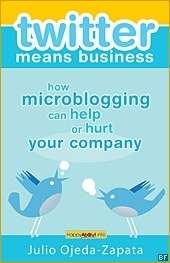 In order to build a relationship it’s important to stay in
touch. This applies in our personal lives as well as business. Just like we nurture a relationship with a
new friend we want to nurture our relationship with prospects so they will
become our new client. In order to
nurture that relationship, contact is necessary. And What's more important the value that
contact brings the prospect.
In order to build a relationship it’s important to stay in
touch. This applies in our personal lives as well as business. Just like we nurture a relationship with a
new friend we want to nurture our relationship with prospects so they will
become our new client. In order to
nurture that relationship, contact is necessary. And What's more important the value that
contact brings the prospect.
Not everyone we meet wants or needs our products or
service….now. But, if we stay in touch
and offer value in our communication, perhaps that will change and/or the
prospect will refer us when asked, ‘who do you know who sells…..’
Sometimes people just don’t respond to our time table.
People are busy. Life happens. People forget. Our priorities are not their
priorities. Building relationships with
people and trying to establish a helpful giving attitude will come back
tenfold.
We can expand the ways we keep in touch which might include: phone calls, one on ones, post cards, letters, greeting cards, emails, audios, videos, etc. Then mix up the forms of contact creating interest and anticipation and offering value. Although we may have a lot of information of interest about our business, it is important in building a relationship that we take into consideration the interest of our prospect. By notating their interests and following up with them with information shows that we do truly care about building the relationship.
Every business and sales person can benefit from
relationship marketing. By building the
relationship and keeping in touch with clients is a great referral source. I
refer to these clients as a “Golden Referral Source.” If the sales person builds a solid
relationship with their client, found them the perfect, home, car, etc., AND
stays in touch with them over the years, they will receive referrals and more
business from that client for years to come.
Some companies are cutting their prices to keep clients in
today's economy. If a company has a
quality product, outstanding service, is dependable, and has built a solid
relationship by staying in touch, then that customer is not going to stray just
because they might save a few dollars. They realize that the relationship and
service they have received is a better value.
Here are some ways to stay in front of your clients.
- · Follow up with a phone call, offer industry information on a periodic basis
- Mailing them something personal not bulk or junk mail.
- · Personal visit to their place of business and not necessarily to make a sale
- · Be their business partner. Take a personal interest in their success.
- · Willingness to help even if there is no monetary gain now
Zig Ziglar says that if you help enough people to get what
they want, you’ll get what you want.
Remember that it is more costly to find a new customer than it is to maintain and keep the ones we currently have. If we maintain 5% of our current clientele we can double our business. Because they will come back to us time and time again and will refer others to us.
Remember that it is more costly to find a new customer than it is to maintain and keep the ones we currently have. If we maintain 5% of our current clientele we can double our business. Because they will come back to us time and time again and will refer others to us.
68% of clients leave because of perceived indifference.
Success is the sum of small efforts, repeated day in and day out. ~ Robert Collier
Success is the sum of small efforts, repeated day in and day out. ~ Robert Collier
In appreciation,
The Painted Lady



































